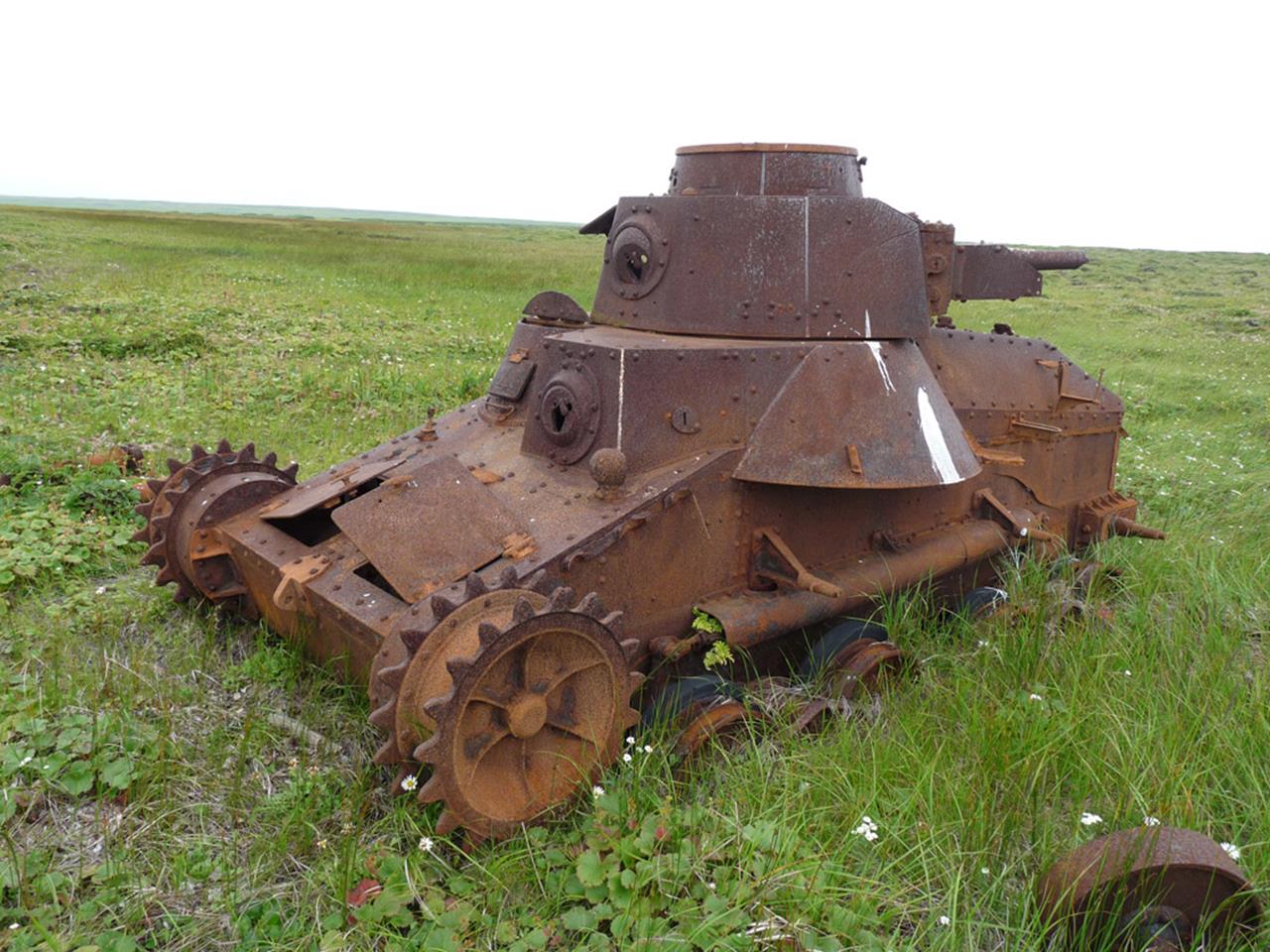A Type-95 Ha-Go Japanese tank wreck
For those rare travellers who get to Shumshu Island this tank was a must-see.

According to the available information, this tank used to belong to Capitan Ito, the commander of the 4th company of the 11th tank regiment.
It is worth mentioning that by the start of the Invasion of the Kuril Islands the units of the regiment had been dispersed all over the island.
In particular, the 4th tank regiment was deployed to the north of the Miyosino (Kuzminovski) airfield.
Thanks to the fact that its station was the closest to the High point 171, the company that consisted entirely of Ha-Go tanks arrived there first.
According to the Navy record book, at 9:27 am the commander of the mortar company reported that 6 or 7 enemy tanks had battled through to the High point 171.
The attack was mostly faced by Kamchatka marines. On the request of the mortar unit, the flagship of the troop carrying fleet, Dzerzhinsky escort vessel, brought down fire on the high point.
As the result of the battle that started, 7 tanks were hit and the remaining ones dropped back.
Capitan Ito’s tank gun was shot through, and it was no longer able to participate in the battle.
The tank was knocked out of action, and it stayed right where it was. While it was standing there, it was partially dismantled, but nevertheless, for a tank that had sustained battle damage its condition was quite alright.





Ito’s tank was one of the few that still had their shell sheets in place. Most of the Ha-Go tanks have had their upper front sheets taken off.

The details of the shell and the running gear. The cracks are not battle damage; they are the result of fatigue processes that are quite common for armor.




The roof of the engine compartment was partially intact.

A couple of shots from the top.


The tank turret. There is no hatch, but on the whole its condition is more or less ok. Take a look at the shiny welded seams; this is a rather common thing austenite…






Until July 2010 this machine was located just off High point 171. It is currently in Yuzhno-Sakhalinsk, where it has been put on exposition after undergoing restoration.
Photo by Zhanna Shaidarova
Photo by Zhanna Shaidarova
Images by Yuri Pasholok, reproduced with permission








